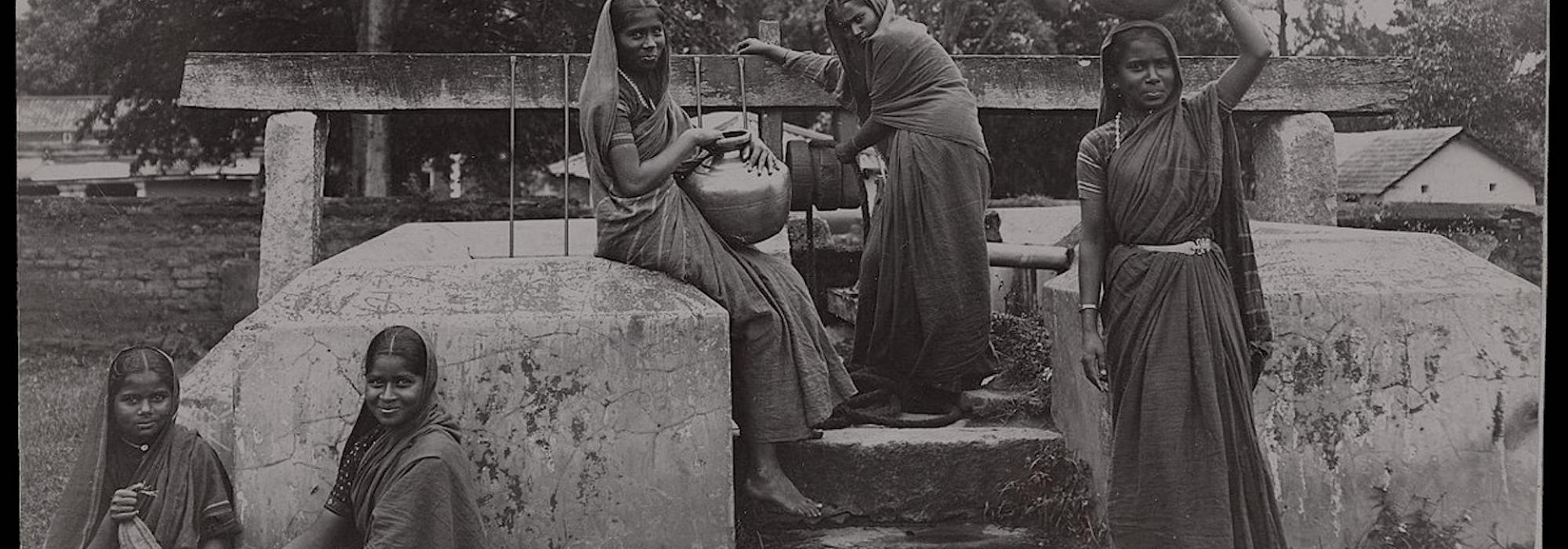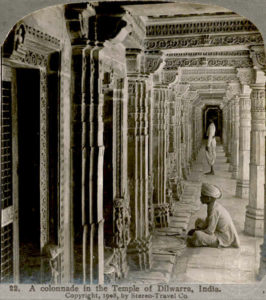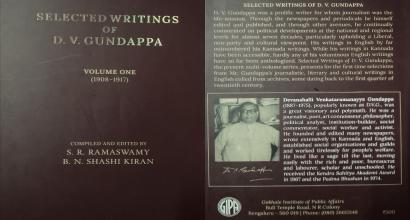Translator’s Note: This was written by the iconic D.V. Gundappa in May 1972 as a preface for the volume titled Vaidikadharma Sampradaayastharu (Traditional Vedic Scholars) forming part of his acclaimed Jnapaka Chitrashaale (The Art School of Memories) series that first appeared in the daily “Kannada Prabha.” Translated by Sandeep Balakrishna.
The pages that follow are an attempt to bring to notice how a certain portion of our society lived.
The chief characteristic of that societal facet was to discern and experience a life of opulence amidst poverty. That opulence can’t be captured by the calculations of any bank. That wealth doesn’t lend itself to money and gold. It’s the wealth of the soul, of the inner Atman. Those folks had forgotten their paucity of outward riches in the contentment of their inner wealth.
It was but natural for the Christian Padres who came to our country from alien lands to convert our people to their religion. And so they derided and mocked our dharma as the handiwork of the “Priestcraft” and our traditions as “superstition.” Imitating them, some of the highly educated folks among our own people regarded our traditional Vedic scholars with disdain and contempt. But there is indeed another perspective with which to regard our traditional Vedic scholars. That society has benefitted from them immensely—this is the brief substance of this volume.
It is evident that there exists a unique way of life called Indian Culture (Bharateeya Samskruti) in this world. Those who wish to glean a few tidbits of this culture’s form and characteristics might like the memory-pictures of the folks that I have written about in these pages.
The word “Samskruti” is often translated in English as “way of life” and “way of living.” What is the chief goal of life? What are the methods that the human being adopts in order to achieve it? What is the special quality in the life of a man who attains refinement by following these methods? These are some of the fundamental aspects of something called the path of life.
The word path also means road. And every road has a goal. And there are some expectations in the journey towards reaching that goal. All of these are included in the ambit of the word “culture.”
The world has scores of civilizations and races which differ in several aspects. All humans are pretty much alike in terms of basics like food and dress. But each country differs from the other in terms of mental attitudes and cultural impulses. But these varying impulses don’t vary in every single aspect. If it did vary completely, it wouldn’t have been possible for different countries and peoples to connect with one another. It is only because there’s commonality in some aspects and uniqueness in others that people of one country are able to develop contact and do business with people of another. Indeed, the inspiration for one country to connect with another lies precisely in this uniqueness.
Uniqueness of Lifestyle
The significant element that one should take into account in this interaction with different countries and people is the uniqueness of lifestyle.
One culture might be superior in food production and cuisine to others. Another might be superior in cloth manufacturing. Yet another in sculpture, still another in technology, another in science, and yet another in fine arts. Thus, each civilization and culture will have an upper hand over others in say human resources and human accomplishments.
The Indian people too, are endowed with such a unique singularity both in terms of quality and strength. The Indian people have an inimitable, unique cultural distinction contrasted with other civilizations and cultures. This cultural distinction is indeed the life-breath of the people of India. If this life-breath is lost, the Indianness of Indians will be lost.
So what are the key features of this thing called Indian Culture?
Even Indians were like others in terms of their physical, bodily life. Even they were hungry, thirsty, and suffered pain if someone pinched them. Blood would flow if a thorn pierced them. Even they had joys and sorrows. They laughed when they were happy and wept when sad. Even they were afflicted with worries of food and clothing and love and longing.
But there was a difference: an attitude of ultimate spirituality in every worldly business; a desire for spiritual peace amid all mundane impulses; an attitude of purity in all earthly bonds of family and friends—these are the key features of Indian Culture. A view of inner wellness, non-expectation, purity—these are the three attributes that were regarded as the highest goals of life by Indians since time immemorial as a cultural disposition. Enjoying wealth amid poverty, remaining tranquil amid commotion, laboring towards hygiene amid squalor—this is Indianness.
Simplicity—Contentment
One cannot find marvelous, valorous, dazzling or grand elements in the profiles of the people pictured in the pages that follow. There are no tales that will attract the world’s eyes and ears.
The people I describe are poor from one perspective; they led lives of simplicity; they had no resources of any sort; they were neither flashy nor pompous. But they were quietly content within themselves. Those who regard that there’s beauty in a life of simplicity, contentment, and tranquility will find this volume useful.
Traditional Vedic scholars and purohits, teachers of Shastras, narrators of Puranas, Haridasas—what kind of extravagance do we find in the lives of such people? They’re lives of really tiny villages. It’s the flow of a small stream; there’s neither ebb nor tide. Yesterday is exactly like the day before. Tomorrow is exactly like today. Everything is uniform, everything is gentle. This was the daily life of those people.
Sandhyavanadam, teaching, Puja, Purana…there was no sign of grand adventures or great surprises. Nor could one spot an opportunity for excitement or fury. We can actually call them uncivilized. A majority of them hadn’t even seen a railway train, and those who had seen, had seen it from afar but had never sat inside.
Yet, all of them had experienced the cream of life. And had themselves become a source of joy in the lives of their neighbours. If there exist some people in today’s civilized era who can detect taste in the stories of even such people, this volume of pen pictures is meant for them.
It is also my intent as far as possible, to turn the minds of people towards a life of simplicity and tenderness.
Concluded in the next part









































